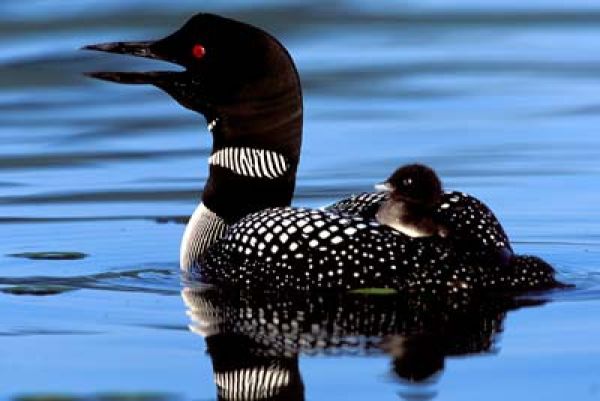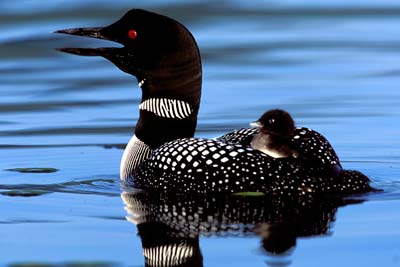I was sad to learn that in just 60 years – less than a lifetime – loons may be gone from all summer lakes in the Continental United States. Changes to the climate are gradually driving loons north to Canadian lakes in the summer.
The loon is just one example of how the warming planet is affecting birds. According to a report from the National Audubon Society (climate.audubon.org), more than half of the North American bird species studied (314 out of 588) are likely to have trouble over the next 60 years. Twenty percent are at risk of extinction. Changes predicted include increased drought in some areas and flooding in others, larger populations of predators (that will adapt well to changes), and famine.
Famine becomes an issue for birds as the timing of migration, reproduction and the availability of food sources become out-of-sync with each other. In parts of Canada, some migratory birds are already having trouble because the insects they eat hatch too early in the season. By the time the birds arrive, after travelling thousands of miles, there may not be enough insects left for the hungry birds.
As the climate warms, some bird species will do well because they are able to take advantage of the changes. Other birds will adapt, perhaps by migrating earlier or moving north. But, some species will go extinct because they cannot adapt quickly enough to keep up with the rapid changes.
Historically, changes to the climate as dramatic as those happening today occurred over thousands of years. The plants and animals moved together gradually as the climate warmed or cooled. This is important to keep in mind, because species exist in communities where their lives are interconnected.
Modern climate change is happening at a rapid pace that we measure in decades. Plus, the landscape is altered so dramatically by development that many habitat remnants occur as ecological islands in a sea of asphalt and buildings, leaving little room for plant and insect species to move. Birds may be able to fly to a better spot, but if the insects and plants they need do not exist there, they may not survive.
Each of us can do something to help:

 I remember the first time I heard a loon. My husband, Tom, and I were camping one summer in northern Wisconsin near a small lake. That first night, we heard an eerie sound that I didn’t recognize.
I remember the first time I heard a loon. My husband, Tom, and I were camping one summer in northern Wisconsin near a small lake. That first night, we heard an eerie sound that I didn’t recognize.